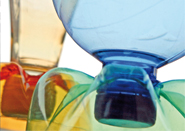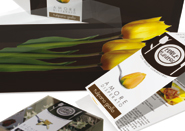|
|
|
user instructions
Luxe Pack
S.Pedrazzini,
M. Senaldi
shopping bag
Edizione Limitata
Francalma Nieddu
identi-kit
I'M Glam
Sonia Pedrazzini
Trama Doppia
Marco Senaldi
market release
Carte da Boutique
Cordenons
show box
100% alimentare
Valeria Bucchetti
market release
Il Negozio che più ci assomiglia
FutureBrand
tools
BEco Lusso per un Eco Mondo
Francalma Nieddu
identi-kit
Cheap Murano
Sonia Pedrazzini
show box
VNuovi Lussi: speciale Salone del Mobile
Sonia Pedrazzini
tools
Out of the Box
market release
Quando Coca-Cola diventò Coke
Landor
News
identi-kit
Arte e Crimini di Josephine Meckseper
Francesco Spampinato
market release
Valore al Platino
RBA
My Pack
Miriam Mirri / Cannamela
book box
|
|
Hanno detto di noi…
Impackt, competente e ironica
bibbia del settore...
(D-Casa la Repubblica delle donne)
Parlano di noi su...
Undo, il portale di arte contemporanea

Le nostre copertine
Front cover
The Complete History of Postcontemporary Art
(particolare), 2005
Josephine Meckseper
Courtesy the artist
and Elizabeth Dee, New York
Back cover
Can of Gold
Marcel Wanders
|
|
|
 |
guida turistica attraverso
i panorami reali e mentali
del packaging
tourist guide to the real
and spiritual landscapes
of packaging |
|
|
 |
|
|
user instructions
|
|
|
Luxe Pack
Sonia Pedrazzini, Marco Senaldi
?«Il lusso… è senza dubbio uno dé grand'istrumenti della diffusione del denaro e delle ricchezze in uno Stato»; così chiosava oltre due secoli fa l'economista e filosofo napoletano Gaetano Filangieri, nel suo La scienza della legislazione del 1785. Le sue parole vanno collocate nell'ambito dell'accesa polemica, svoltasi durante il '700, tra chi sosteneva che il lusso era una forma di sfarzo dispendioso, improduttivo e in ultima analisi immorale, e chi invece (come lui) vi intravedeva i segni del progresso, del libero scambio e dell'evoluzione sociale.
Non c'è dubbio che, lungo i secoli che ci separano da quell'epoca, il lusso sia molto cambiato. Nel corso del '700 e poi dell'800 il lusso denotava l'appartenenza di classe, e implicava l'esibizione di beni e prodotti inarrivabili per la grande maggioranza della popolazione, anche se già (a differenza dei secoli precedenti) oggetto di desiderio da parte dei ceti emergenti. Di quella preistoria del lusso, l'acuta penna di Carlo Goldoni fornisce un ritratto indimenticabile nella sua Trilogia della villeggiatura, dove giovani squattrinati smaniano per marsine e camicie troppo costose, e facoltosi commercianti non mancano di lagnarsi per le enormi spese di manutenzione delle loro dimore di campagna.
Ma il lusso simbolico vero e proprio è una nozione moderna, che nasce insieme alla cultura industriale e a quella che Thornstein Veblen definì "economia della classe agiata": è qui che sorgono i veri e propri status symbol - auto, barche, ville, gadget tecnologici, abiti, mobili, che "fanno la differenza", e diventano gli ambitissimi segni della riuscita sociale, immortalati da decine di film sul tema che vanno da classici d'anteguerra come Il signor Max, a commedie degli anni '60 come Il sorpasso o Una vita difficile.
Negli ultimi decenni però, tra saldi, sconti, outlet, vintage, sottomarche, seconde linee, imitazioni, giapponesate, cineserie, e vere e proprie "patacche", è innegabile che il lusso e gli oggetti ad esso connessi si siano appannati, e abbiano perso la loro smagliante e irresistibile aura. Come hanno scritto A. Tartaglia e G. Marinozzi, nel loro recente saggio Il lusso ...magia e marketing. Presente e futuro del superfluo indispensabile, Franco Angeli, 2006, "il 'vecchio' lusso, anche se pare che tutti se ne siano dimenticati, era in gran parte costituito di storiche griffe italiane e francesi cadaverate dalle ingiurie del tempo. Aziende che si erano ridotte a disegnare foulard delle uova di pasqua Pernigotti o a firmare le piastrelle da bagno di qualche ceramicaio sassuolese". Quelle storiche griffe, che erano andate perdendo col tempo il fascino e l'attrattiva del prodotto inaccessibile, conoscono oggi una seconda giovinezza, al punto che occorrerebbe parlare di un vero e proprio "ritorno" del lusso, che però non può più essere "ingenuo" come quello di una volta. Come viene detto nel sito di Italia Independent, luxury brand che fa capo a Lapo Elkann, oggi il lusso è qualcosa di connesso a scelte personali, che segnano la fine dei prodotti-feticcio "come segnali di riconoscimento da ostentare".
È in virtù di questo "ritorno" che abbiamo pensato al nostro numero di Impackt come a una rassegna delle nuove attitudini di consumo in cui beni di lusso e loro sembianze semantiche (leggi: packaging design) non assolvono più solo il ruolo di ostentazione simbolica, ma svolgono la funzione di esperimenti di ricerca, e possono ibridarsi senza timore con la filosofia del low cost e della eco-sostenibilità. Così almeno la pensano i vari propugnatori del cosiddetto Eco-Chic, che, come ci racconta Francalma Nieddu, hanno ormai le loro fiere, ma anche stilisti affermati come Antonio Marras, che puntano tutto sull'estrema attenzione qualitativa (sostenuta da una altrettanto ricercata comunicazione, come ci dice il suo art director Paolo Bazzani), nonché designer di grido come Marcel Wanders, che ha saputo coniugare l'icona dell'imballaggio più pop, cioè la classica scatoletta di metallo, con il prestigio del gioiello d'oro nella sua Can of Gold, forse il simbolo più efficace per esprimere questa nuova paradossale tendenza del nostro tempo.
Luxe Pack
Sonia Pedrazzini, Marco Senaldi
«Luxury items…. are without a doubt one of the great tools for the spreading of money and wealth in a State»; thus commented the Neapolitan economist and philosopher Gaetano Filangeri over two centuries ago, in his La scienza della legislazione dated 1785. His words are to be seen in the context of the heightened dispute during the eighteenth century, between those that considered luxury as a form of costly pomp, unproductive and when it came down to it immoral, and those (like Filangeri) who glimpsed signs of progress, of free exchange and social evolution therein.
No doubt about it that over the centuries that separate us from that era, luxury has changed a lot. During the eighteenth and nineteenth century luxury denoted the belonging to a class, and implied the showing of goods and products unattainable for the vast majority of the population, albeit having become (as against the previous centuries) objects of desire of the emerging classes. The acute pen of the celebrated eighteenth century Venetian playwright Carlo Goldoni provides us with an unforgettable portrait of that prehistory of luxury in his Trilogia della villeggiatura (Holiday Trilogy), where penniless young men crave after frock coats and overly expensive shirts, and wealthy tradesmen do not fail to complain about the enormous expense in the upkeep of their country houses.
But symbolic luxury true and proper is a modern notion, that came into being with the industrial culture and that of what Thornstein Veblen defined as the "economy of the wealthy class"; it is here that the true and proper status symbols arise - cars, yachts, villas, technological gadgets, clothes, furniture, that "make the difference", and become highly sought-after signs of social success, Immortalised by tens of films on the subject that go from films like Italian prewar classic Il signor Max (Mr. Max) to comedies of the sixties such as Il soprasso (The Easy Life in English) or the obversely tiltled Una vita difficile (A Difficult Life).
Over the last decades, what with sales, reductions, outlets, vintage, sub-brands, second lines, imitations, base Japanese products, chinoiserie, and junk true and proper, it is undeniable that luxury and the objects connected to the same have become tarnished, having lost their dazzling and irresistible aura. As A. Tartaglia and G. Marinozzi wrote in their recent essay Il lusso ...magia e marketing. Presente e futuro del superfluo indispensabile, Franco Angeli, 2006,"the "old" luxury, even if it appears that everyone seems to have forgotten about it, was largely made up of historic Italian and French griffes, cadavered by the ravages of time. Companies that have had to resort to designing foulards for Pernigotti easter eggs or putting their name to classic Italian bathroom tiles". Those historic griffes, that in time have lost the lure and charm of inaccessible products, are now experiencing a second youth, to the point where one should speak of a true and proper "return" of luxury, that though cannot be "naïve" as it once was. As stated in the Italia Independent website, the luxury brand of Fiat heir Lapo Elkann, today luxury is something related to personal choice, that marks the end of fetish-products "as identification marks to be paraded around".
And in virtue of this "return" we conceived of this issue of Impackt as a review of the new attitudes consumption in which luxury goods and their semantic resemblances (read: packaging design) no longer only absolve the role of symbolic ostentation, but also carry out experimental research functions, and can be fearlessly hybridised with the low cost and eco-sustainable philosophy.
This at least is how the various proposers of socalled Eco-Chic see things, that, as Francalma Nieddu tells us, now even have their own fairs, along with successful fashion designers the likes of Antonio Marras, who place everything on the extreme attention to quality (underpinned by an equally recherché communication, adds Marras' art director Paolo Bazzani), along with celebrated designers the likes of Marcel Wanders, who has managed to combine the most "pop" of all packaging icons, that is the classic metal can, with the prestige of gold jewellery in his Can of Gold, perhaps the most effective symbol for expressing this new paradoxical trend of our time.
|
|
|
|
user instructions
Luxe Pack
S.Pedrazzini,
M. Senaldi
shopping bag
Limited Edition
Francalma Nieddu
identi-kit
I'M Glam
Sonia Pedrazzini
Dual Approach
Marco Senaldi
market release
Boutiques Papers
Cordenons
show-box
100% Food
Valeria Bucchetti
market release
The Store that Resembles us the Most
FutureBrand
tools
Eco Luxury for
an Eco World
Francalma Nieddu
identi-kit
Cheap Murano
Sonia Pedrazzini
show box
New Luxuries: Salone del Mobile special
Sonia Pedrazzini
tools
Out of the Box
market release
When Coca-Cola became Coke
Landor
News
identi-kit
Art and Crimes by Josephine Meckseper
Landor
market release
The Value of Platinum
RBA
my pack
Miriam Mirri/ Cannamela
book box
|
|
|
Our covers
Front cover
The Complete History
of Postcontemporary Art
(detail), 2005
Josephine Meckseper
Courtesy the artist
and Elizabeth Dee, New York
Back cover
PCan of Gold
Marcel Wanders
|